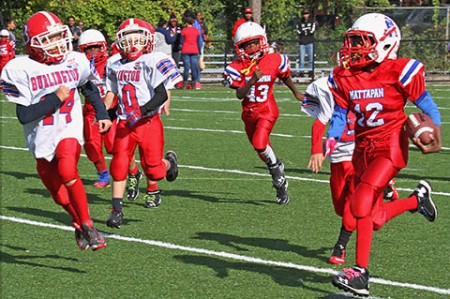The disclosures of classified U.S. government documents by the Wikileaks whistle blower web site and the erratic behavior of the site’s founder, Julian Assange, have triggered a barrage of commentary from journalists, other communication professionals and government officials.
They have raised a number of questions. Is Assange a journalist? Is Wikileaks protected by the First Amendment to the U.S. Constitution? Does Wikileaks serve the public interest? Has Assange put lives at risk and needlessly damaged diplomatic relationships? Has he engaged in illegal activities? Should he be prosecuted? Should the government try to shut down Wikileaks and impose controls over any similar organizations that may arise?
Todd Gitlin hit the nail on the head when he wrote in a December 7, 2010 The New Republic post that Wikileaks is the Facebook of whistle blowing and Julian Assange is no Daniel Ellsberg. To which I would add he’s also no Bob Woodward or Carl Bernstein.
It’s clear to me and to many other communication professionals that Wikileaks’ practice of publishing raw information and intelligence documents obtained by questionable means does not conform to any traditional model of journalism, and Assange is not a journalist as defined by these models. But this hardly ends the debate, which I see as largely irrelevant for two reasons.
The first is it’s impossible today to say who is a journalist and who isn’t. The traditional models do not apply in an age of social media, blogs, citizen journalism and actors-and-comedians-turned reporters and commentators who are widely seen as legitimate conveyors of news and opinion.
The second is that the Constitution conveys essentially the same free speech rights to all citizens as it does to journalists, and these rights are frequently extended to non-citizens. The Legal Information Institute at Cornell Law School states, “Despite popular misunderstanding the right to freedom of the press guaranteed by the first amendment is not very different from the right to freedom of speech. It allows an individual to express themselves (sic) through publication and dissemination. It is part of the constitutional protection of freedom of expression. It does not afford members of the media any special rights or privileges not afforded to citizens in general.”
West’s Encyclopedia of American Law concurs, saying most jurists have held that “freedom of the press derives from freedom of speech” and the Court “has generally rejected requests to extend to the press privileges and immunities beyond those available to ordinary citizens.”
So love Assange or hate him, he is entitled to the same free speech rights as anyone else, but if he’s believed to have engaged in any illegal activity, he’s subject to prosecution. The same would apply (and has applied) to traditional journalists.
Some commentators suggest that Assange should not be demonized and potentially prosecuted for simply telling the truth. While the leaks may ruffle feathers and disrupt diplomatic relationships, in the long run society will benefit from knowing the truth, they argue.
But even if one can ascertain the truth in all instances, which is doubtful, truth can be a tricky business. Some things can be true but better left unreported, for example when the information puts lives in jeopardy or needlessly harms important relationships. What useful purpose is served by reporting confidential diplomatic assessments of French President Nicolas Sarkozy as “an emperor with no clothes, Russian Premier Vladimir Putin as and “alpha-dog ruler of a deeply corrupt state ” or German Chancellor Angela Merkel as “risk aversive and rarely creative.”
Some things can be true but misleading without context. Some things are true but not important. Some truths that are important can be obscured if they are lumped in with a bunch of junk. Sorting through information and making judgments about what’s important and what the public should know has traditionally been an important role for journalists. But the rules have apparently changed, and I’m not prepared yet to say they are better.
It is unclear at this time if any lives have been or will be put in danger as result of the leaks, in part because only a small percentage of the cables that Wikileaks has obtained have been released, as my colleague Steven Spenser of Praxis Communication noted recently. Assange has promised to post tens of thousands more, and some of these may contain the names of spies, double agents, informants and foreign officials who have provided intelligence crucial to our national security.
The international press freedom organization Reporters Without Borders (RWB) has a love-hate relationship with Wikileaks. On August 12, 2010 RWB criticized “the incredible irresponsibility” Assange showed when he posted an article titled “Afghan Was Diary 2004-2010.” It said publication of the stolen documents was “highly dangerous,” particularly when they named Afghan informants, and the precedent set by the action “leaves all those people throughout the world who risk their freedom and sometimes their lives for the sake of online information even more exposed to reprisals. Such imprudence endangers your own sources and, beyond that, the future of the Internet as an information medium.” http://bit.ly/9lgLGE.
But on December 22, 2010 RWB posted a mirror website for the US diplomatic cables leaked by Wikileaks as a “gesture of support for Wikileaks’ right to publish information without being obstructed.” RWB said “harassment and attempts to close Wikileaks represent an attack on the ‘democracy watchdog’ role to which article 10 of the European Convention on Human Rights refers.” http://bit.ly/gjehg9
Neil James, associate executive director of defence in Assange’s home country of Australia, is quoted as saying, “Wikileaks is not authorized in international or Australian law, nor equipped morally or operationally, to judge whether open publication of such material risks the safety, security, morale and legitimate objectives of Australian and allied troops fighting in a UN-endorsed military operation, Moreover, as an Australian citizen, Wikileaks’ Julian Assange may also be guilty of a serious criminal offense by assisting an enemy the ADF is fighting on behalf of all Australians, especially if the assistance was intentional.”
There is good reason to question Assange’s mental stability and as well as his motives and methods.
The October 23, 2010 New York Times reported that Assange’s own comrades as well as government officials are denouncing him and “abandoning him for what they see as erratic and imperious behavior, and a nearly delusional grandeur unmatched by an awareness that the digital secrets he reveals can have a price in flesh and blood.”
The same article quotes Herbert Snorrason, an Icelandic political activist, as saying that Assange is “not in his right mind.” It adds that several Wikileaks colleagues say Assange alone decided to release the Afghan documents without removing the names of Afghan intelligence sources for NATO troops. Birgitta Jonsdottir, a Wikileaks volunteer and a member of Iceland’s Parliament said, “We were very, very upset with that, and with the way he spoke about it afterwards.”
U.S. Secretary of State who summed up the situation succinctly: “There is nothing laudable about endangering innocent people, and there is nothing brave about sabotaging the peaceful relations between nations.”
Unfortunately we live in an age in which technology empowers an unbalanced anarchist like Assange to do just that on a global scale, and it’s sad that many people think he’s a hero.
But it would be even sadder if our government used this sordid affair as an excuse to seek restraints on what citizens and journalists can publish, an undertaking that would almost certainly fail given the globalization of communications. America can and will survive Wikileaks, but it cannot survive censorship and remain true to the ideals that have made it the greatest democracy in the history of mankind.














